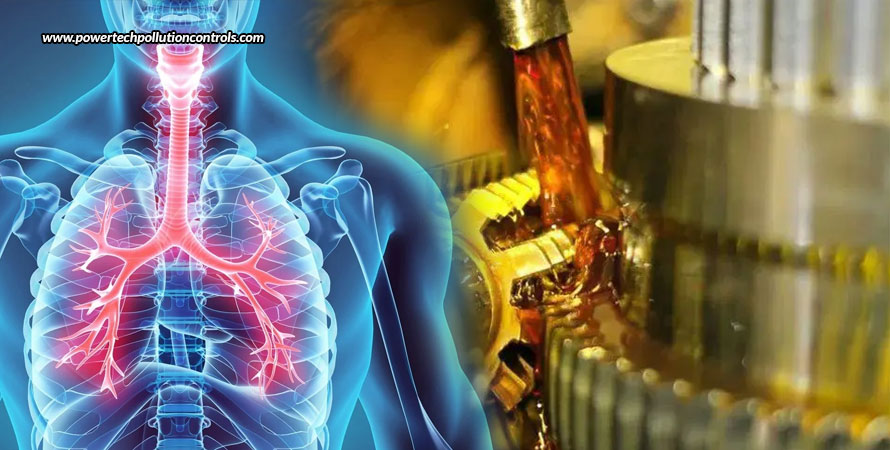
5 Serious Oil Mist Hazards
Oil mist, a fine mist of oil particles, is produced during a variety of industrial operations that require oils or coolants. These procedures may involve metalworking operations, machining, cutting, grinding, and lubrication. Oil mist often results from the atomization and dispersion of microscopic oil droplets into the air caused by high-speed tools or equipment coming into contact with the oil or coolant. While oil mist may initially seem safe, it can really provide a number of risks to both employees and the surrounding workplace.
Respiratory issues caused by oil mist
In industrial situations, exposure to oil mist can cause serious respiratory problems. Inhaling tiny oil droplets hanging in the air can irritate the lungs and respiratory system. Long-term exposure may cause symptoms like coughing, wheezing, chest tightness, and shortness of breath. Additionally, breathing in oil mist particles can cause the onset of long-term respiratory illnesses such bronchitis and occupational asthma. To reduce the dangers of respiratory issues brought on by working exposure to oil mist, proper ventilation, efficient mist collection devices, and personal protective equipment are crucial.
Skin and eye irritation caused by oil mist
In industrial settings, exposure to oil mist can irritate the skin and eyes. When tiny oil specks hanging in the air come in touch with the skin or eyes, it can irritate them and cause inflammation, redness, itching, and irritation. Exposure that is prolonged or repeated may increase these side effects and might result in dermatitis or conjunctivitis. Direct contact with oil mist can be reduced by taking sensible safety precautions such as wearing proper attire, gloves, and safety goggles. The risk of skin and eye irritation can also be considerably reduced by installing effective mist collection devices in workplaces that lower the quantity of airborne oil particles.
Long-term health effects caused by oil mist
Prolonged exposure to oil mist might have negative health effects. Fine oil droplet inhalation has been linked to lung cancer and chronic respiratory conditions such bronchitis and chronic obstructive pulmonary disease (COPD). Dermatitis and chronic conjunctivitis can develop as a result of persistent and worsening skin and ocular irritation. Long-term exposure may also raise the chance of systemic health complications, such as cardiovascular problems. To minimize long-term health consequences and guarantee the safety of workers in such conditions, it is essential to reduce oil mist exposure by sufficient ventilation, efficient mist collection devices, and personal protective equipment.
Slip and falls due to oil mist
Oil mist can make surfaces slick in industrial environments, raising the risk of slip and fall incidents. Fine oil droplets that land on floors and walkways can lead to dangerous situations by decreasing grip and making surfaces slippery. This may cause workers to trip, slip, and fall, which may result in injuries ranging from bruising to fractures. The likelihood of slip and fall incidents linked to exposure to oil mist can be reduced with good housekeeping practices, routine cleaning of affected areas and the use of non-slip floor coverings, offering a safer working environment for staff.
Equipment contamination caused by oil mist
Oil mist in industrial settings can cause equipment contamination and endanger processes and equipment. Fine oil droplets can condense on equipment surfaces, affecting their effectiveness and leading to lubrication failure. Equipment that has been contaminated may face more damage, less efficiency, or even malfunctions. Production delays, higher maintenance costs, and potential safety risks can all result from these problems. Oil mist contamination can be avoided by putting in place efficient mist collection systems and performing routine equipment maintenance, which will lead to better equipment performance, a longer lifespan, and uninterrupted production processes.
The use of appropriate control measures, such as an oil mist collector or mist extraction devices, is crucial to reducing the risks brought on by oil mist, thus protecting your workforce. By efficiently lowering exposure and upholding a safer working environment, these systems are made to collect and eliminate oil mist particles from the air. Oil mist exposure concerns can be further reduced through routine upkeep, cleaning, and worker training on the proper handling and disposal of oil-based materials.


